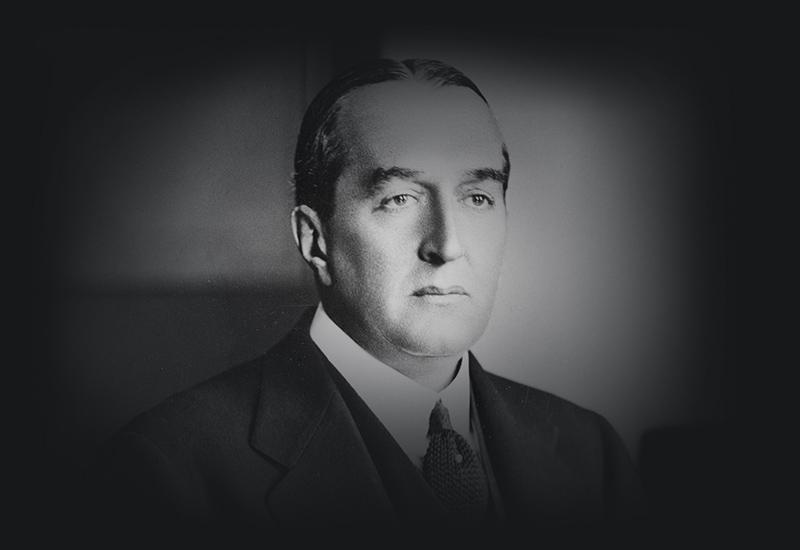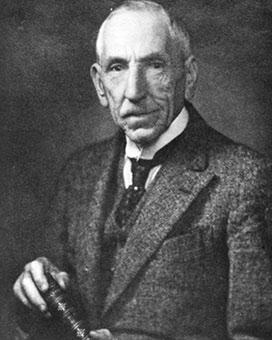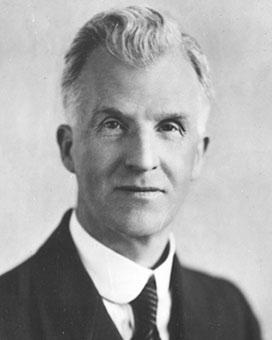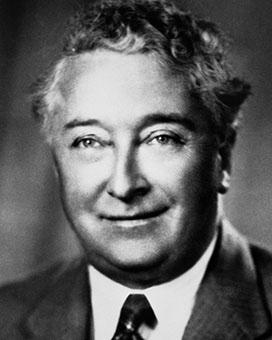On this page
1910 to 1919
11 May 1918: 1st elected to Federal Parliament
Bruce was elected as Member of Parliament for the seat of Flinders (Vic.), having won a by-election on 11 May 1918.
1920 to 1929
9 Feb 1923: 8th Prime Minister
Bruce was sworn in as prime minister after the resignation of William Hughes after the 9th federal election.
9 Jun 1923: Loan Council
The government agreed to form a Loan Council to coordinate states' borrowing. The Council's 1st meeting was on 1 February 1924.
5 Oct 1923: Imperial Conference
Bruce arrived in London for the Imperial Conference. He was an advocate for the 'men, money and markets' empire trade policy that shaped Australia's agricultural, pastoral, financial and population policies throughout the 1920s.
1 Jan 1924: Mt Stromlo observatory
With the appointment of its first director, the Commonwealth Solar Observatory was established. Located on Mount Stromlo, outside Canberra, it enabled scientific research on the sun and geophysics.
1 Jan 1924: Federal roads
The Australian Automobile Association was formed. It lobbied for federal finance for roads and a national traffic code. Commonwealth funds for national highways were provided for in the Federal Roads Act 1926.
30 Jan 1924: Cabinet in Canberra
The 1st Cabinet meeting was held in Canberra. The ministers were lodged at Yarralumla House, later the residence of the Governor-General. The building of Parliament House had begun on 28 August 1923.
4 Sep 1924: Agricultural science
The Commonwealth Citrus Research Station opened at Griffith, New South Wales, in the Murrumbidgee Irrigation Area. In March 1927, it became a research station of the Commonwealth Council of Scientific and Industrial Research.
14 Apr 1925: Big Brother
The 'Big Brother' child immigration scheme was launched as part of the scheme for British settlement in Australia. The Barnardo and Fairbridge organisations brought children for settlement at locations around Australia. Fairbridge farm school at Pinjarra, Western Australia, had been established in 1912.
8 Oct 1925: 8th Governor-General
Lord Stonehaven served as governor-general until 22 January 1931. Lord Somers was acting governor-general from 3 October 1930 to 22 January 1931.
14 Nov 1925: Compulsory voting
The 10th general election was the 1st in which voting was compulsory after the Commonwealth Electoral Act was enacted on 10 October 1924.
14 Nov 1925: 10th federal election
Bruce retains office after leading the Nationalist-Country Party coalition to a landslide victory over the Labor Party.
22 Jun 1926: CSIRO
The government set up the Council for Scientific and Industrial Research (later CSIRO) to foster applied research. In 1927, the CSIR moved into its building at Black Mountain in Canberra.
4 Sep 1926: Referendum
Two proposals, one related to industry and commerce and the second to the power of the Parliament to protect the public against the interruption of essential services, were rejected by the Australian electorate.
19 Nov 1926: Free and equal
At the Imperial Conference, agreement was reached on the independent and equal relationship of the British dominions. The agreement recognised the dominions as 'autonomous communities within the British empire, equal in status ... and freely associated as members of the British Commonwealth of Nations'.
1 Dec 1926: 1st petrol tax
A federal levy on imported petrol was imposed for the first time. A tax on locally refined petrol was introduced the following year. The Commonwealth Oil Refineries at Laverton, Victoria and the Shell company's works at Clyde, New South Wales, began refining petrol in 1924.
30 Apr 1927: Forestry School
The Forestry School, established in Adelaide, transferred to permanent premises in Canberra.
9 May 1927: New Parliament House
The ceremonial opening of parliament in Parliament House, Canberra, was the deadline for completion of many other buildings, including the Hotel Canberra and Hotel Kurrajong, and the prime ministerial residence, The Lodge. As Commonwealth departments were transferred from Melbourne to Canberra, housing construction was accelerated in an attempt to keep pace.
2 Jun 1927: Australian films
A Royal Commission into the film industry was appointed. It reported in April on the state of film-making in Australia. It also reported on the process of distributing films from the United States to the 1250 Australian cinemas.
09 Jun 1928: 1st Pacific flight
Charles Kingsford-Smith and Charles Ulm completed the 1st flight across the Pacific. They flew the Southern Cross from Oakland, California to Brisbane. In August, they made the 1st non-stop flight across Australia, from Perth to Point Cook. In September, they achieved the 1st flight from Australia to New Zealand.
17 Nov 1928: 11th federal election
House of Representatives seats and 19 Senate seats.
17 Nov 1928: Referendum
A successful referendum altered constitutional provisions on Commonwealth-state financial relations. The referendum was held with the 11th federal election.
31 Jan 1929: The Warrigal
The Royal Australian Air Force purchased its 1st Australian plane, the Warrigal I.
2 Aug 1929: End of the line
The Alice Springs to Adelaide railway line was completed. In 1930, however, Commonwealth construction of the North Australia railway ceased with the line from Darwin terminating at Birdum.
23 Aug 1929: Industrial challenge
The government attempted to pass a Bill abolishing the Conciliation and Arbitration Court. The Bill aimed to relegate arbitration powers to the states, except in the 'external' industries of shipping and stevedoring.
12 Oct 1929: 12th federal election
All 75 seats in the House or Representatives were up for election, but there was no Senate election. Bruce's Nationalist-Country Party was defeated in a landslide by the Labor Party under James Scullin. Bruce also lost his own seat of Flinders, the 1st Australian prime minister to do so.
22 Oct 1929: Left office
After electoral defeat, Bruce left office and James Scullin was sworn in as prime minister.
1930 to 1939
19 Dec 1931: 13th federal election
Bruce is re-elected to the seat of Flinders (Vic.), which he had lost at the 12th federal election.
7 Oct 1933: Left Parliament
Bruce resigned his seat to become Australia's High Commissioner to the United Kingdom. He held this post until 1945, building a reputation as a sound and steady statesman in international affairs, and serving on the British War Cabinet.
1960 to 1969
25 Aug 1967: Death
Bruce died where he had lived for almost half of his life – in London. He ordered that he be cremated, and provided in his Will that his ashes be returned to his native land and scattered over the national capital. Canberra, the city he had helped create, remains a monument to this prime minister.





